- Main points about quantum retrocausality
- What is quantum eraser (retrocausality), really?
- How scientists found this idea and who discovered it
- How particles actually behave
- What quantum eraser means for how we think about time
- A detailed look at how the future might influence the past
- The full story of the discovery
- How retrocausality might work
- Quantum eraser: how particles behave
- Important experiments and what they found
- What all this tells us about the past, future, and reality
- Arguments against retrocausality and responses
Main points about quantum retrocausality
- Scientists have found evidence that quantum retrocausality—where something you do now might affect what happened in the past—could be real in certain experiments. However, this doesn’t mean you can travel back in time or send messages to the past. The normal cause-and-effect relationships we experience in everyday life stay intact.
- This strange effect probably comes from quantum entanglement (when two particles are mysteriously connected) and interpretations that treat past and future the same way. This challenges how we normally think about cause and effect, though scientists are still arguing about whether this is truly “retrocausality” or just particles being correlated in ways we don’t fully understand yet.
- Some evidence suggests retrocausality could explain confusing quantum mysteries like wave-particle duality (where particles sometimes act like waves and sometimes like particles). But other scientists say regular quantum physics can explain what we see without needing the idea that the future influences the past.
- The concept shows that reality might be deeply connected in ways we haven’t understood, hinting that the past and future might be more linked together than old-fashioned physics suggested. This raises interesting questions about whether we have free will and what time really is.
What is quantum eraser (retrocausality), really?
Quantum retrocausality is a name for situations in quantum physics where something you measure or decide right now seems to change how particles behaved in the past. This doesn’t mean effects happen before causes in the normal sense. Instead, it’s about how some scientists think quantum particles exist—not with one fixed past, but with pasts that depend on both where they started and where they end up.
Picture this: in a lab experiment, a particle’s path through two slits might seem to be decided by how you choose to measure it later on. This idea is interesting, but scientists still debate it a lot. The important thing is that it doesn’t break Einstein’s rules about relativity or let information go backward in time.
How scientists found this idea and who discovered it
This concept started showing up in the 1940s, when famous physicists named John Wheeler and Richard Feynman were working on absorber theory—a way of explaining radiation (energy waves). Their theory included imaginary waves that travel backward through time to explain how radiation works.

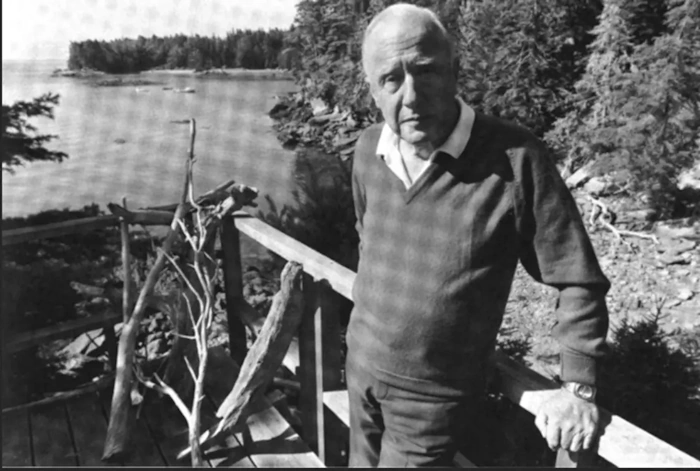
Later, in 1978, Wheeler came up with the delayed-choice experiment. This is an experiment where you decide whether to look for wave behavior or particle behavior, but you make that decision after the particle has already traveled through the setup.
In the 1980s, scientists Marlan Scully and Kai Drühl created something called the quantum eraser. This experiment removes clues about which path a particle took, and surprisingly, this can bring back wave-like behavior even if you erase the clues after you’ve already measured the particle.
Experiments done in the 1990s and continuing today, like ones using pairs of connected photons (light particles), have shown that these effects are real. However, scientists disagree about whether you actually need the idea of retrocausality to explain what happens.
How particles actually behave
Electrons and photons (light particles) in these experiments show something called wave-particle duality—sometimes they act like waves, and sometimes they act like particles. In a delayed-choice quantum eraser, a photon goes through two slits and becomes linked (entangled) with another photon.
When you measure the first photon, it either looks like it went through both slits at once (wave-like) or through one slit (particle-like). If information about which slit it went through is available, you see particle behavior and no wave interference. But if you erase that path information by doing something to the linked photon, even later on, wave interference shows up in parts of your data.
This makes it look like the particle’s past behavior (wave or particle) was somehow connected to what you decided to do in the future.
What quantum eraser means for how we think about time
If retrocausality is real, it suggests the quantum world might not work with simple forward-only cause and effect. Instead, it hints at something called a “block universe,” where the past, present, and future all exist at the same time. It tells us that the past might not be fully decided until you actually measure something, and that events far apart in time might be mysteriously connected.
For the future, some scientists think retrocausality means there could be influences going backward through time in certain interpretations—they describe it like a “handshake” between past and future that settles what happens in quantum events. The good news is that none of this changes how the large, everyday world works or creates time-travel paradoxes, because no actual usable information flows backward.
A detailed look at how the future might influence the past
Quantum retrocausality is one of the strangest and most mind-bending ideas in modern physics. It challenges everything you think you know about time, cause, and effect.
The basic idea is this: in certain situations involving quantum particles, events that happen in the future—like when you decide to measure something—might be able to affect what happened to particles in the past. And somehow, this doesn’t break Einstein’s rules about relativity or allow for time-travel paradoxes.
This unusual idea comes from scientists trying to understand the weirdest parts of quantum mechanics, including wave-particle duality (where particles are sometimes waves and sometimes particles), entanglement (when two particles are mysteriously linked), and the fact that particles can affect each other instantly even when far apart. While this isn’t the main way physicists think about quantum mechanics, retrocausal ideas offer neat explanations for long-standing puzzles—like why particles seem to know in advance how they’ll be measured.
To write this article we’ve looked at scientific papers to give you a balanced view that includes criticisms as well. This discussion shows how retrocausality might completely change how we understand the connection between past and future, suggesting that reality is much more woven together and interconnected than physics textbooks from a hundred years ago ever suggested.
The full story of the discovery
In the 1940s, two famous physicists named John Archibald Wheeler and Richard Feynman created something called absorber theory. This theory said that electromagnetic waves (light and similar radiation) actually have two parts: one going forward in time and one going backward. In their model, when an electric charge gets speeded up, it sends out a wave going forward, but things in the future send waves back through time that affect the source. This explained energy conservation and got rid of annoying physics problems involving the particle interacting with itself, all without needing backward messages.
Around that same time, a physicist named Olivier Costa de Beauregard suggested a retrocausal answer to a famous physics puzzle called the Einstein-Podolsky-Rosen paradox.
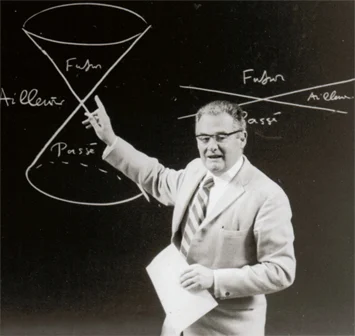
He proposed that the mysterious instant connection between two distant particles could be explained if influences bounced backward and forward through time in a zigzag pattern. This way, you didn’t need “spooky action at a distance” and it still obeyed Einstein’s rule that nothing goes faster than light, since no actual information traveled backward.
Wheeler expanded on this in 1978 with a detailed idea called the delayed-choice concept. He suggested experiments where you wait until after a particle has already gone through its path before you decide whether to measure it as a wave or as a particle.
In 1982, scientist Marlan Scully and Kai Drühl added to this with the quantum eraser experiment, where you could remove information about which path a particle took even after you’d already detected it—and this would bring back wave-like behavior.
John Cramer made retrocausality more popular in 1986 with his Transactional Interpretation, which described quantum events as two-way “handshakes” between waves going forward and backward in time.
More recently, physicists like Huw Price and Ken Wharton have pushed retrocausality by arguing that time should be treated symmetrically (the same going forward and backward), which would get rid of strange asymmetries in how other interpretations work.
All of these developments show a shift from quick fixes to complete theories, driven by the fact that the math equations of quantum mechanics work the same way backward and forward, and by the need to explain how distant particles can affect each other without one having to send a signal to the other.
How retrocausality might work
Retrocausality works through ideas that let influences go backward in time while still making sure that no actual information can travel to the past—this is important because it means you couldn’t use it to change history or send messages backward.
In the Transactional Interpretation, a quantum system sends out a wave going forward (the wave function ψ), which travels into the future. Any system that could absorb this wave sends back a confirmation wave (an advanced wave ψ*) that travels backward. The quantum event is “set” where these waves meet and match up with the starting and ending conditions. This “handshake” happening across time explains what happens by using probability math (|ψ|²). This model naturally explains entanglement as mutual effects across time.
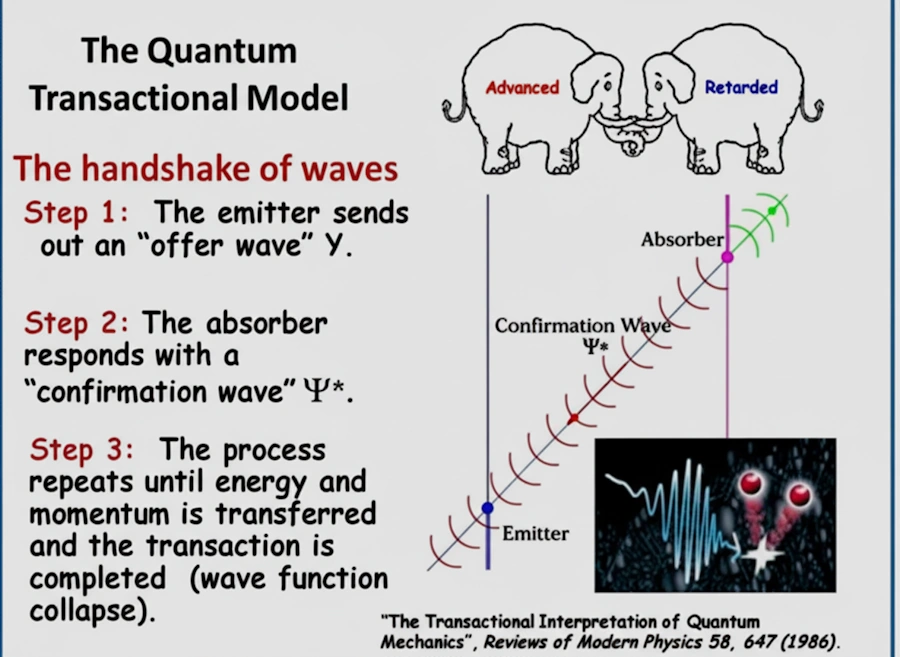
Other ways of thinking about this include the Two-State Vector Formalism (created by Aharonov and colleagues), which uses both the starting state and the ending state to fully describe a quantum system. There’s also a version of Bohmian mechanics (an alternative way of thinking about quantum mechanics) where particles are guided by information from the future. T
he Tlalpan Interpretation presents retrocausality as something that comes from quantum systems: when systems are small and below a certain threshold, they show time-symmetric, retrocausal behavior. But when they get big and complex enough, this symmetry breaks, the backward effects stop, and you get the irreversible records we observe in the everyday world.
These ideas take advantage of loopholes in theorems that seemed to say retrocausality was impossible. They do this by allowing local explanations—meaning influences travel only between nearby things—but with future choices affecting hidden variables (invisible properties of particles).
Time symmetry is the key to all of this: the basic laws of physics are symmetric under a special transformation (called CPT-symmetry), which means cause and effect could work equally in both directions unless something breaks that symmetry, like initial conditions or the way systems evolve.
Quantum eraser: how particles behave
Particles like electrons or light behave in ways that seem crazy when you set up retrocausal experiments. In Wheeler’s delayed-choice setup, light goes through a divider that splits it into two paths, and then acts either like a wave (interfering with itself from both paths) or like a particle (taking just one path), depending on whether you put a second divider in place later. Real experiments with photons or atoms confirm this wild result: the interference pattern appears or disappears after the particle has already traveled, as if the particle somehow “knew” what you were going to do.
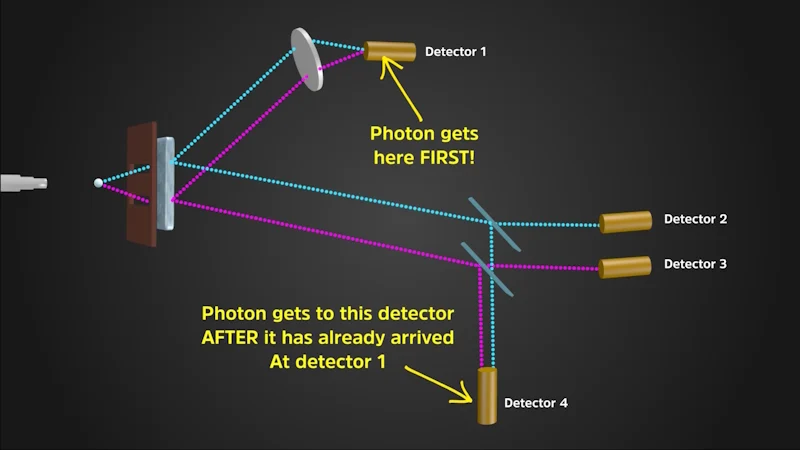
In the delayed-choice quantum eraser, two entangled photons are used.
One photon (the signal) goes through two slits, while the other photon (the idler) goes to detectors. If the idler measurement shows which slit the signal went through (particle-like behavior), no interference pattern shows up for the signal.
But if you erase that information (by using beamsplitters that combine the paths), the interference comes back in certain parts of the data. Electrons act the same way in similar setups, and the entanglement between particles amplifies tiny random differences into bigger, measurable effects.
If retrocausality is happening, the particle’s past state depends on what happens at the end, but in a probabilistic way—nothing gets rewritten with certainty; instead, probabilities change based on what happens later.
Important experiments and what they found
Scientists have run many experiments to test ideas related to retrocausality, and they usually confirm what quantum theory predicts, though people disagree about what it all means.
| Experiment Name | Year / Scientist | What the Experiment Did | Main Results | What It Might Mean for Retrocausality |
|---|---|---|---|---|
| Wheeler’s Delayed-Choice | 1978 (Wheeler); actually performed 1984 (Alley et al.) | Light goes through a divider; a second divider is added or not added after the light has already traveled. | Whether you add the second divider determines if the light acts like a wave (with interference) or a particle. | Suggests the past behavior was decided by a future choice, challenging normal cause-and-effect. |
| Delayed-Choice Quantum Eraser | 1982 (Scully & Drühl); first real experiment 1999 (Kim et al.) | Two connected photons; you erase clues about the path of one photon after both have been measured. | Interference shows up again in parts of the data when you erase the path clues, even if erased nanoseconds later. | Seems like erasing later changes what happened earlier, but the connection between the particles is the real explanation. |
| Space-Based Delayed-Choice | 2017 (Vedovato et al.) | Light travels between satellites in space; the choice about what to measure is delayed and happens across huge distances. | The results match ground-based experiments and rule out hidden explanations that stay local in space. | Supports the idea that retrocausal connections could work across huge distances for entangled particles. |
| Multipath Delayed-Choice | 2021 (Li et al.) | Silicon photonics (light traveling through tiny silicon structures); multiple possible paths with delayed measurement choices. | Wave-particle duality shows up in more complex situations than simple two-path experiments. | Reinforces the idea of time-symmetric effects in complicated setups. |
| Coherent Light Quantum Eraser | 2023 (Zhang et al.) | Using thermal light (ordinary heat radiation) and optical tools; no entanglement needed. | Erasure brings back interference after measurement, even without the entanglement usually needed. | Makes retrocausal ideas apply to a wider range of situations, not just special quantum particles. |
These experiments often use a technique called spontaneous parametric down-conversion to create pairs of photons. They show that quantum results are connected to future actions, but scientists still argue about what that connection really means.
What all this tells us about the past, future, and reality
If retrocausality is real, it suggests a “block universe” where all moments in time actually exist at once, but from your perspective, things still look like cause comes before effect. It hints that the past isn’t completely decided until you make a measurement, and it suggests that parts of reality far away in time might secretly be connected.
Looking forward, it hints that influences might work backward in time in certain retrocausal theories—they describe it as “handshakes” between the past and future that determine what happens in quantum events. It tells us that quantum reality is profoundly interconnected in ways that transcend time as we normally think of it—time might not move in only one direction as Einstein and Newton thought.
From a philosophical viewpoint, it challenges the idea that everything is predetermined.
Instead, it supports the idea that multiple possibilities are real, and it could solve the “measurement problem” in quantum mechanics (why measurement changes what you observe) without needing to add collapse of the wave function as an extra rule. In cosmology (the study of the universe’s beginning and end), it might help explain the arrow of time—why the past is different from the future—as something that develops from the low-entropy conditions at the Big Bang, with retrocausality hidden in the microscopic quantum realm.
Arguments against retrocausality and responses
Critics say retrocausality is unnecessary, confusing, or even incoherent. Physicist Sabine Hossenfelder argues that the delayed-choice eraser doesn’t show the past being rewritten at all. She says interference comes from looking at just parts of the data, not from causation; the overall picture was always fixed.
Sean Carroll emphasizes decoherence (the process where quantum systems become classical): entanglement creates branches of reality, and your choice of how to measure just reveals which branch you’re in, without any backward influence.
Another argument is the “bilking paradox”—could you prevent a cause after observing the effect?—but quantum randomness blocks this paradox from causing real problems.
Some critics say retrocausal models need very specific arrangements to avoid sending information backward, which seems as unlikely as a cosmic coincidence. Tim Maudlin points out inconsistencies in some transactional models when randomness is involved.
Those who support retrocausality counter that time symmetry actually requires it, and that tests might prove it—for example, specific patterns in how quantum systems behave at certain scales could validate it.
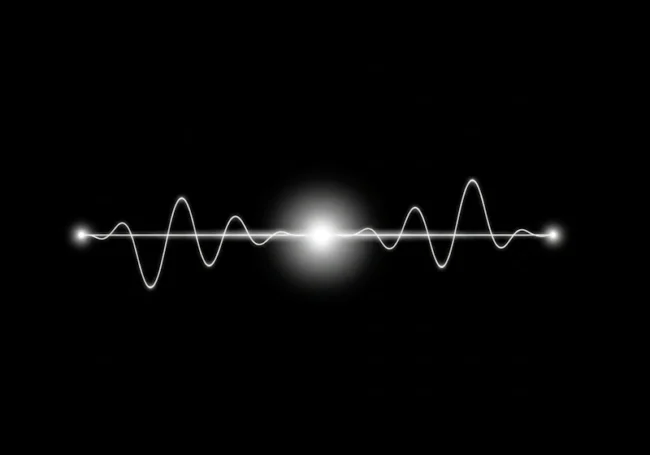
Leave a Reply